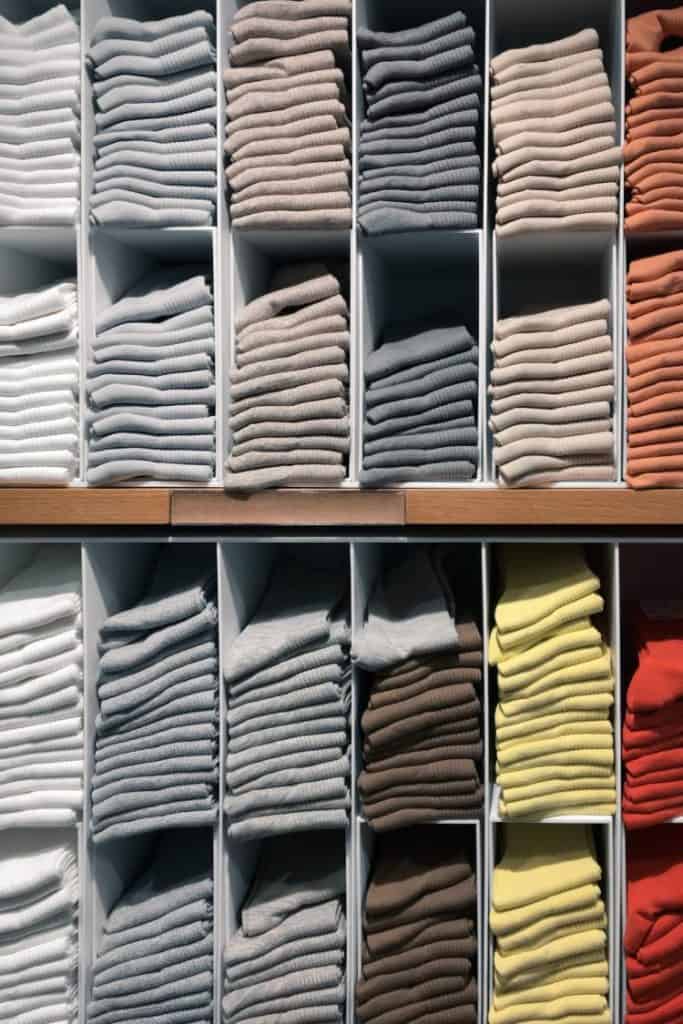You probably think “how to fold socks” is something only mothers and obsessively neat people do. You’d be wrong.
Not only are there more ways to fold socks than you can shake a sock drawer at, but a properly folded pair of socks can save both time and money. Both are things we can never have too much of.
The best time to fold your collection of ankle, crew, and over-the-calf socks is when they are fresh from the dryer. Or plucked one by one from the clothesline, if you are into solar power.
First fold your T-shirts, sweaters, jeans, and underwear. Because they don’t have parts. Like socks, that come in pairs. If you are lucky, matching.
Lay out the socks on a flat surface, then match them by color and size. Put any orphans aside for later handling.
Now that you have several dozen matching pairs, it is time to fold them. Remember, we mentioned time, earlier. When you are in a rush in the morning, there is no time to root through the sock drawer, frantically looking for the mate of the one in your hand.
That won’t happen, if you have folded or rolled all those socks. To fold a pair socks, put one on top of the other, then start at the toes, and fold them by thirds. Voila! A folded pair of socks. These can be lined up, side by side, in your sock drawer.
To roll socks, again place one sock on top of the other, but then tuck an inch or two of the open end of the top sock under itself. Starting at the toes, tightly roll them up, and pull the opening of the bottom sock over the pair, then toss in the drawer. Done.
When were socks invented
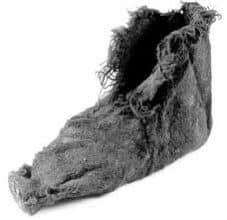
The first pair of socks were invented thousands of years ago. It happened shortly after a blister appeared on the foot of a sandal-wearing shepherd. His wife whipped out her knitting needles, and made him a pair of wool socks.
The idea caught on, and socks have been found in ancient tombs from Denmark to Egypt. Socks keep you warm in winter, and wick away sweat when you are walking like an Egyptian.
The first name we can connect with socks was (naturally) a man named Revered Lee, in 1589. And he actually invented a machine to make socks.
He gave a pair to Queen Elizabeth, who was not pleased, as it threw a number of female knitters out of work. It also mean the Common Man could afford a pair of socks. So think of Reverend Lee when you order a couple of dozen ankle, crew, or dress socks from our website.
The reverend packed up himself and his machine, hied to France, where the king saw both a chance to make a buck, and one up the Queen of England. Soon France was the sock-making capital of Europe, and the Industrial Revolution was born.
In the early days, royalty, both male and female, wore stockings, which we just long socks. No doubt you have seen the famous painting of our Founding Fathers signing the Declaration of Independence. Check out the knee socks everyone is wearing. Along with knee breeches, frock coats, and powdered wigs.
Times and fashion changes, but the need for quality hosiery stays the same. Today you can order a dozen pairs of our socks for the price of Ben Franklin’s Almanac. Delivered by his other invention: the Post Office.
What are diabetic socks
Diabetes is more than just managing your blood glucose. The disease can effect the feet, as well. Diabetics can develop neuropathy and vascular disease, and run the increased risk of infections.
One of the benefits of wearing diabetic socks is preventing toe irritation. They do this with seamless construction. A diabetics’ skin is sensitive, and stitching can lead to blisters and ulcers. Non-diabetics also appreciate the quality and comfort of our diabetic socks.
In addition, diabetic socks have extra padding and cushioning. The foot is under pressure due to swelling, and excess weight, and our soft, thick material in the toe and heel cushion the foot. These areas need extra protection because they are prone to neuropathy.
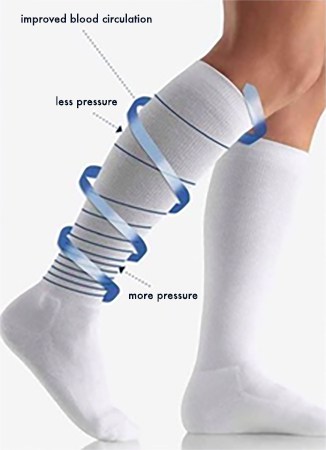
The diabetic sock should also keep your feet warm. Constricted blood vessels lead to reduced blood flow in the foot, making your feet feel colder. The old saying is “cold feet, warm heart”, but for a diabetic cold feet can lead to serious medical issues, such as foot ulcers. Untreated, the danger of amputation is real.
A good diabetic sock not only keeps your feet warm, but it also wicks moisture away. Sweaty feet not only smell bad, but a wet foot is a breeding ground for fungi and bacteria. We all know that bacteria leads to infection. For a diabetic this can leads to the loss of a foot.
Most importantly, diabetic socks are stretchy. There is just enough elastic to hold them up, but never constrict the foot, ankle, and leg. The loosely-knit construction promotes healthy blood flow. You will notice you don’t feel any constriction and pressure when you slip on a pair of our diabetic socks.
In conclusion, diabetic socks are a good choice for anyone needing a comfortable pair of socks.
What to do with old socks
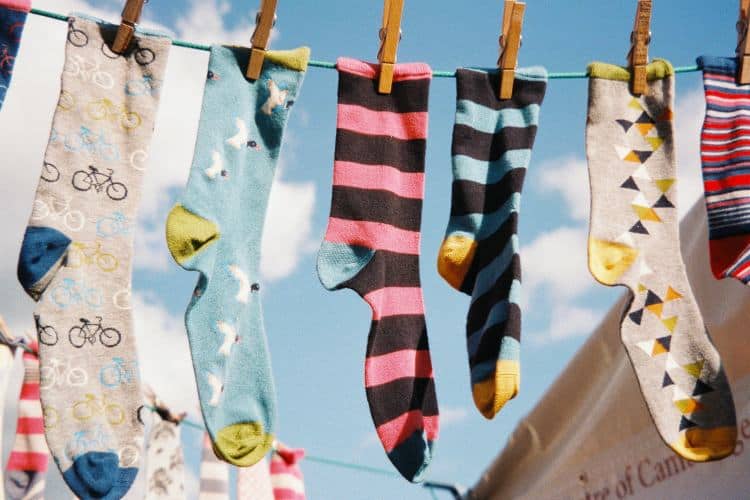
The Beatles sang about Father McKenzie darning his socks in the night. You too can darn your socks. All it takes is a needle and thread, and a bit of practice. “A stitch in time saves nine.”
You can also avoid that hole in the first place by keeping your toenails trimmed short. Another saying goes, “an ounce of prevention is worth a pound of cure.”
Even the highest quality socks—like ours—eventually wear out. Also, the washer and dryer conspire to eat an occasional sock. So, what to do with an orphan, or a threadbare pair?
As it turns out, more things than you can possibly imagine, even on a good day, with your thinking cap on.
Loose items, from golf balls to Scrabble tiles, can be kept together, and ready to play. Nobody wants to run out of houses and hotels when they are deep into a game of Monopoly.
Shoes and socks just go together like PB & J. So use one old sock to put the polish on, and another to shine it up. To keep those shiny shoes looking great slip another old pair of socks over each one. Let the socks gather dust in the closet, instead of the shoes.
Speaking of dust, slip an old sock on your hand, and run it over the top of the refrigerator, before your mother-in-law comes to visit.
Wear a pair of socks on your hands when you polish the silverware. Mom’s eyes will shine as brightly as the tea set when you ask, “One lump or two?”
A foggy windshield is not only exasperating, but dangerous. Stop the fog in its tracks with an old sock filled with moisture absorbing kitty litter on the dashboard.
Tip: Learn how to fold socks and organize them so that they are properly matched and you won’t find loose ones lying around.
What are crew socks
Maybe we should first determine “what is a crew”? Ships have crews, and so do trains, planes, and teenagers. What they all have in common is the need for sturdy socks, to get them through the day.
Slackers are told to “pull your socks up!” Because fashion knows a good thing when it sees it, no opportunity to categorize and specialize a simple item like the sock goes to waste.
So there are not only crew socks, but also micro-crews and mini-crews. We just call them Low Cut Ankle Socks, and they are great to wear with sandals and Crocs, or hanging around the house, shoeless.
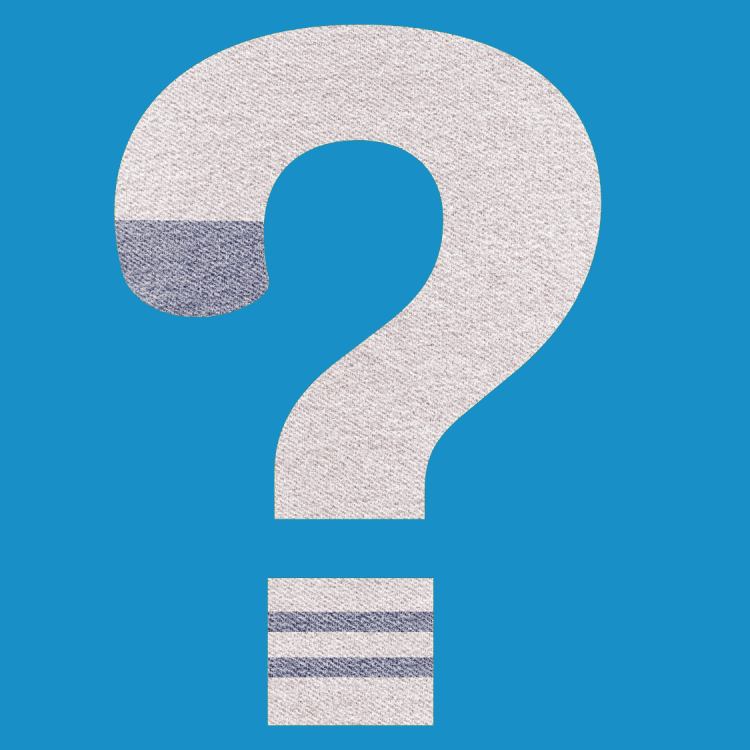
The classic ( and most popular) sock is the so-called crew length. It comes to the middle of the calf, and pairs with every type of shoe, from the aforementioned Crocs, to dress brogans. You’ll find them inside steel-toed boots on construction sites, and beneath the trousers of business executives, male and female.
Crews are knit from sturdy, no-nonsense yarns, as compared to the fine spun yarn used to manufacture dress socks. You want a soft and absorbent sock whether you are training for a race, or racing for a train. This is no time or place for sweat to slow you down or slip you up.
Speaking of slip up, our socks have sturdy elastic ribbing where it counts, so you never have to worry about them falling down on the job. And when they get dirty on whatever job you assign them, they are machine washable, so they stay pristine white or deepest, darkest black, wash after wash. The crew socks come in three sizes for a perfect fit, from the petite gal to the Big and Tall guy.
How to organize socks
If you are a minimalist, or a young man, you can skip this lesson. You probably “organize” the few pair you own by throwing them in the same drawer with you underwear. And when you need a pair of clean socks you just rummage around until you find two that are more or less matching. However, if you have an adult-sized wardrobe, are fashion conscious, or have heard of Martha Stewart, then you need to get organized.
A little time spent sorting, separating, folding, and organizing your socks will pay off on busy mornings when you are dressing for success. That’s when, fresh from the shower, you select the shirt and suit for the day. Only then do you decide on the color and pattern of the socks.
When folding socks, It is preferable to fold, rather than roll-and-tuck your socks, because the latter tends to stretch out the elastic. This makes for droopy sock tops, which tend to fall down on the job.
With shorties, like no-shows and ankle socks, you can simply fold in half, and stack. Crews get a trifold, and long socks four, or even five, if they are knee highs.
The aim is to have every pair folded to the same size rectangle, regardless of the length. Uniformity is the key to a nice looking sock drawer. If you’re one of those minimalists, then you’re done. If you’re a fashionista, the job has just begun. Sort into stacks by length or type, by whites, and by colors. Separate the daily socks for work from the ones for sport or the gym. Lastly, buy dividers for the sock drawer.
How to wash socks
Either by machine or by hand, you need to pay attention to the details in order to do the job properly. Your tender feet need tender care. Like your underwear, your socks are close to the most intimate parts of your body. They need to be soft and clean, without harsh detergent residue.
You can’t just throw your socks in the washing machine with filthy jeans and grungy sweatshirts. Wash separately, or with your underwear.
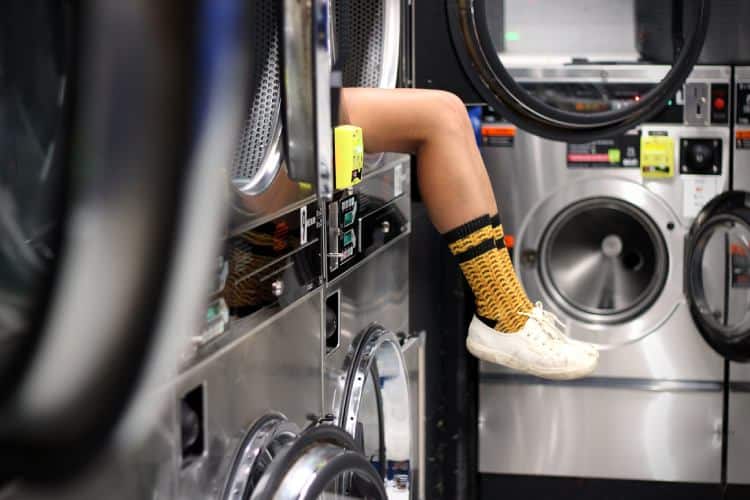
First, turn your socks inside out. Odor-causing bacteria builds up inside the sock! The best time to do this is when you take them off, and toss in the hamper. It’s just one pair, how hard can it be? If you wait until you have a full load, you might be tempted to skip this step. Don’t.
Set the washer on cold water, gentle cycle. Be stingy on the detergent. They were inside your shoes, how dirty can they be?
Don’t put them in the dryer. Hot air and tumbling puts undo stress and strain on the fibers. Heat and elastic are not BFF. You wilt in the heat of summer, and so will your socks in the dryer.
Instead, hang them outdoors in the sun. Sunshine, they say, is the best disinfectant. It also saves on the electric bill. If you don’t have a clothesline (or an outdoors!), lay them out to dry. Your bed is the best spot, since it is flat, absorbent, and you are not using it during the day.
If you decide to wash your socks by hand, then a good time to do it so is when you shower. Fill the sink with cold water, add a squirt of dishwashing liquid. Soak the socks while you shower. Then rinse, and dry flat. Lastly, see instructions at the top of this page on how to fold socks and take care of them.
